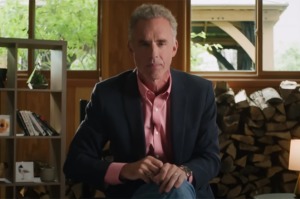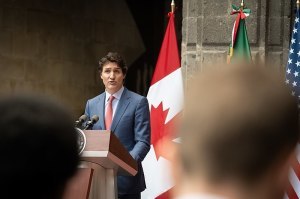Who told students they can't pray in public school?

Meet Nathan, an average, middle school student who lives in a small mid-western town with his parents and two sisters. One night at the dinner table his dad starts a discussion about the importance of prayer. During which he tells Nathan that he needs to pray everyday, even when he’s at school. That’s when Nathan said, “But dad we can’t pray in school; everybody knows that.” His sisters agreed, “Yeah dad, we’re not allowed to pray in school; it’s against the law.”
Unfortunately there are many students across the country that, like Nathan, really believe it is illegal to pray in school, when in fact, nothing could be further from the truth. Prayer has not been outlawed in America’s public schools. Why then is this issue so widely misunderstood? When did our free Country officially ban prayer in public schools? Perhaps we’ll find the answer when we look at the beginning of this controversy and consider each side of the debate.
It all began in 1962 with the Supreme Court case, Engel v. Vitale, in which the Court passed a law that states: “Because of the prohibition of the First Amendment against the enactment of any law respecting an establishment of religion, which is made applicable to the States by the Fourteenth Amendment, state officials may not compose an official state prayer and require that it be recited in the public schools of the State at the beginning of each school day.” (p. 422-436 Miller, para. 4)
Harrison and Stone (1991) wrote, “This decision was a result of a case concerning a school district in New Hyde Park, New York which directed the School’s principal to cause the following prayer to be said aloud by each class in the presence of a teacher at the beginning of each school day: ‘Almighty God, we acknowledge our dependence upon Thee, and we beg Thy blessings upon us, our parents, our teachers and our Country.’ Thus prayers led by, and sanctioned by, school officials were prohibited. This ruling however does not forbid students to pray on their own; the justices merely said that government officials had no business composing a prayer for students to recite.” (p.36)
The government, and the administrators, who run our schools, may not lead children in prayer or force them to pray a certain way. However, all children have the right to pray voluntarily before, during, or after school. In other words, during free time at school, whether it’s lunch, in between classes, or any other time of the day when you are able to talk to your friends you can also talk to God, and you can talk to your friends about God. Not only will the school allow you to pray during these times but you can read your Bible in school as well. In fact, you can find a copy of the Bible in most school and public libraries across the nation.
Justice Abe Fortas (1969) wrote for the U.S. Supreme Court, “It can hardly be argued that either students or teachers shed their constitutional rights to freedom of speech or expression at the schoolhouse door. The Supreme Court has upheld the right of students in public schools to free exercise of religious belief. The Supreme Court rulings on prayer and religious programs in public schools do not prohibit individuals from praying, on their own, during the school day or during school-sponsored extracurricular activities.”
The first amendment to the Constitution gives us the right to religious freedom in this country. Students can pray and read the Bible; the law is clear on this point. The first amendment to the United States Constitution states:
Congress shall make no law respecting an establishment of religion, or prohibiting the free exercise thereof; or abridging the freedom of speech, or of the press; or the right of the people peaceably to assemble, and to petition the government for a redress of grievances. (The first amendment to the United States Constitution, ratified December 15, 1791)
Prayer in school has been a hot topic in the U.S. over four decades now and many prominent church leaders, politicians, and cultural icons have been at the forefront of this debate. Americans from all walks of life have added their voices to the argument creating an overflow of misconceptions on this subject, and doing so at the expense of our children.
More harm has been done to confuse and distort the facts by well meaning yet, misinformed opponents (and proponents) on the topic of prayer in school than the actual law itself. It is not hard to see how this issue has become shrouded in confusion when you consider both sides of the argument. According to Peter McWilliams (1995), "This case is vilified as one that kicked God and prayer out of the schools" (p. 170). This expression is used routinely, and believed, by many people in this country. When covering a school board meeting in East Peoria, Ill., for the Peoria Journal Star, journalist Larry Pahl (1995) said the following, “I heard a school board member say, as if it was a fact as sure as the sun's daily rising, "we've taken God out of the schools." Murray (1995) said, “We live in a society that officially bans prayer in its public schools and most other institutions.” (p. x)
The danger in these widely held misconceptions is that children today are being misled concerning their rights as Americans, students, and Christians. Consider the following statement from former President Bill Clinton who wrote in a 1998 letter to, then, U.S. Secretary of Education, Richard W, Riley, "...Schools do more than train children's minds. They also help to nurture their souls by reinforcing the values they learn at home and in their communities. I believe that one of the best ways we can help out schools to do this is by supporting students' rights to voluntarily practice their religious beliefs, including prayer in schools.... For more than 200 years, the First Amendment has protected our religious freedom and allowed many faiths to flourish in our homes, in our work place and in our schools. Clearly understood and sensibly applied, it works." (1998)
Religious activity in the public schools has been growing in recent years. In the last several decades many religious groups have placed increased interest in student evangelism, and have established thousands of prayer and Bible study clubs in the public schools. This case first came to court in 1962 and twenty-eight years later there was a group of teens that gathered for a retreat, during which, they felt burdened to pray for their fellow students. A report on syatp.org (2005), declared that these young people gathered around the flagpoles of three separate schools to pray. The teens prayed for their friends, the school, and school leaders. God birthed from this the idea that has come to be known as, “See you At the Pole.” On September 12, 1990, 45,000 teenagers gathered at the flagpole in four different states to pray before school started that morning. Oneyear later one million students from Boston to California gathered at 7:00 a.m. to pray prior to the start of school. This ministry has continued to grow over the years since. Now more than three million students from coast-to-coast and around the world gather to pray one day a year.
There will be teachers and school officials, who will be misinformed on this subject, therefore, students must know the truth about prayer and Bible reading in school and they must be aware of their rights in the schoolhouse. If they wish to pray and read the Bible during free time, when it does not interrupt the process of learning, the law gives them the right to do just that. America’s children spend a great deal of their time at the school and will be heavily influenced by that system. We must teach our kids to stand up for what they believe, and we must do this in a way that does not breed rebellion to authority in the heart of the child. This can be done by keeping the mind of Christ and the spirit of love as we approach the issue of prayer in school. Instead of presenting it in negative tones, such as, “They won’t let you pray” or even, “They can't keep you from praying,” we should instead, inform the students and let them know that “The school will allow you to pray.” One day in this country it may well be that our religious freedom is stripped away but for today, prayer and the Bible have not been banned from the public schools. And if the day comes that they are, I pray that we will have a generation of kids who, like Daniel, will set their heart to pray- and let nothing stand in their way.
Roy Belt is a middle school teacher in southern Ohio. In 2007, he started to develop the idea of the podcast ok2pray while talking to his children about the importance of daily payer.




























